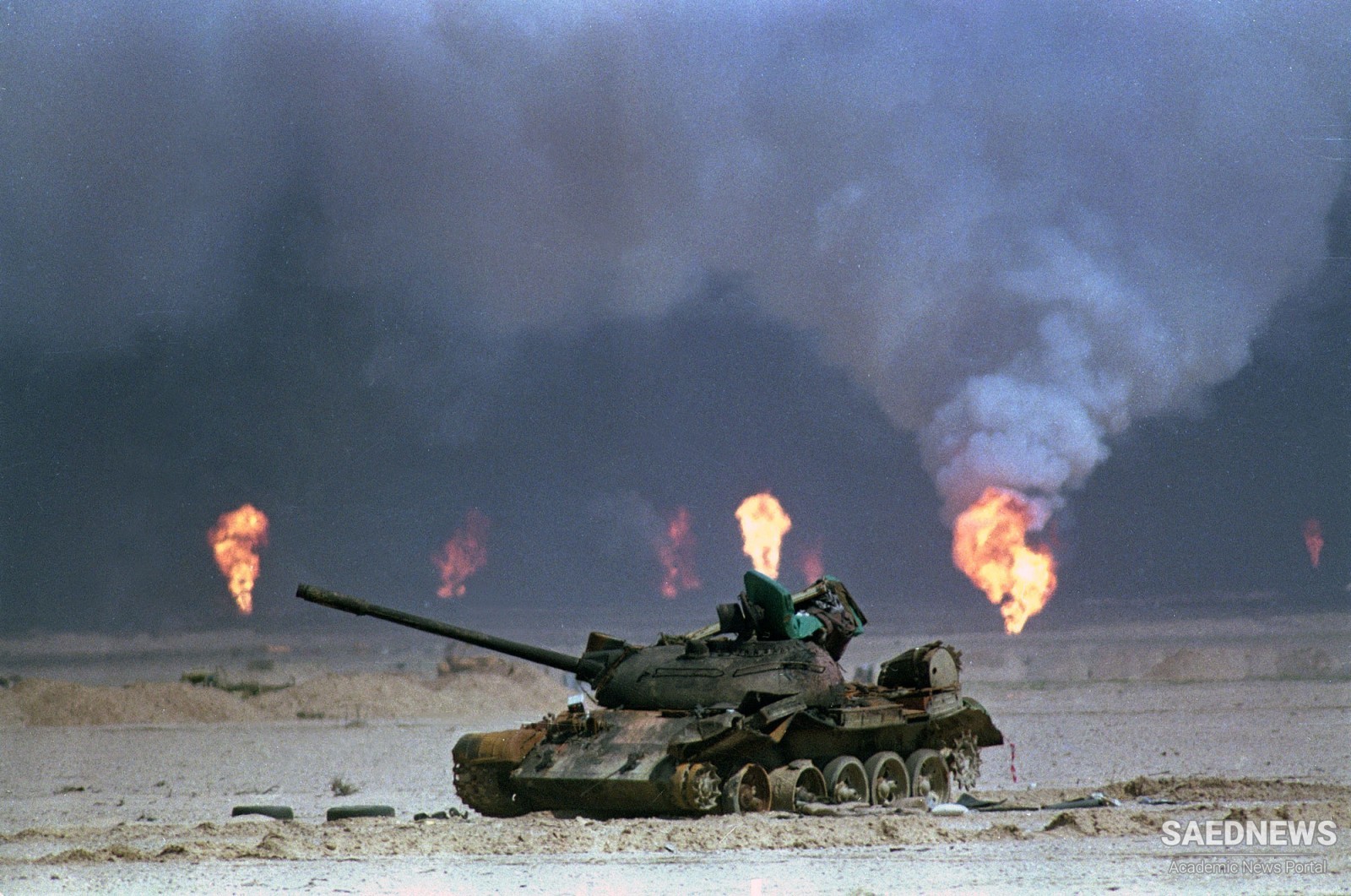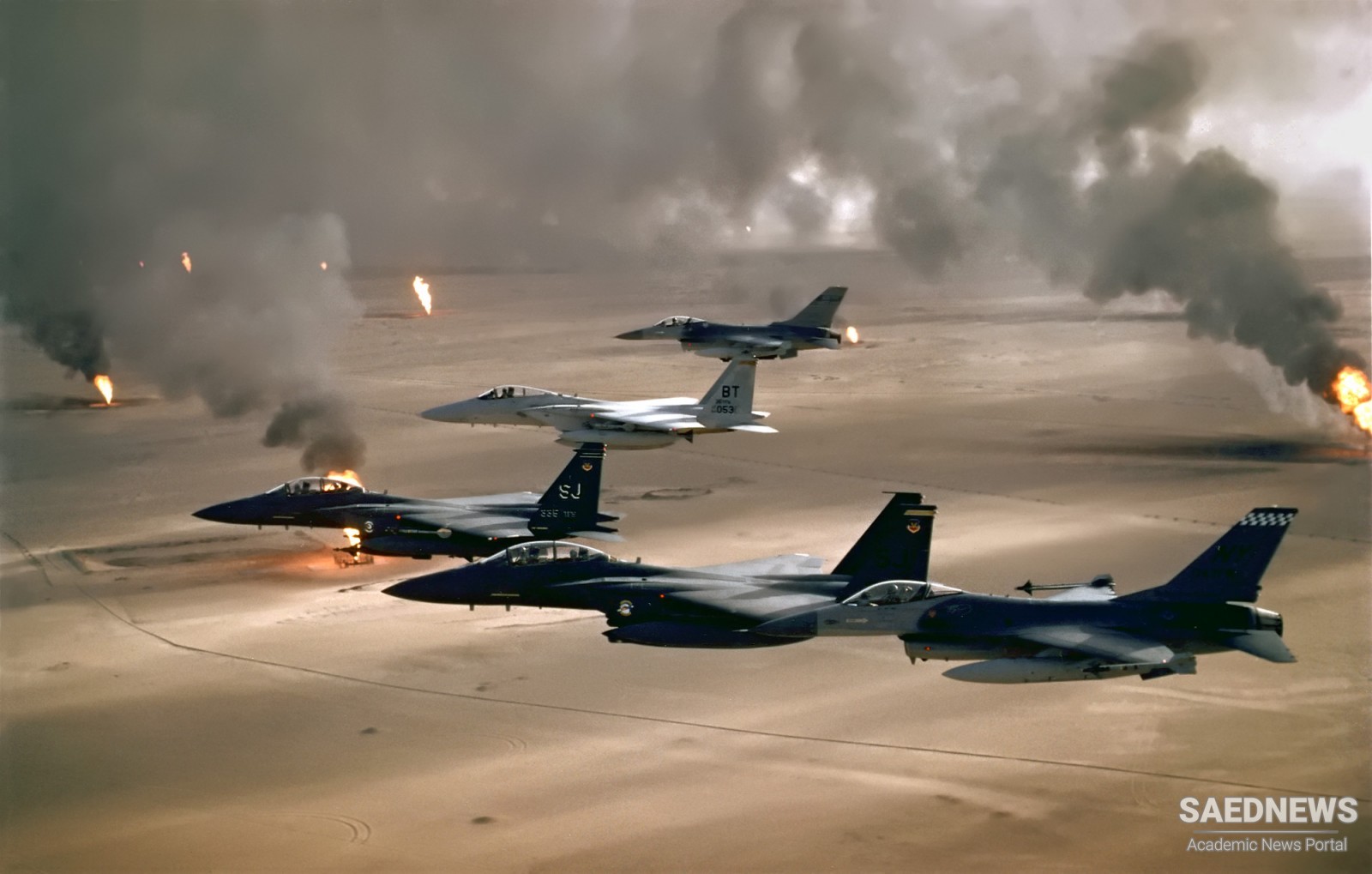In public, Saddam wore a general’s uniform decorated with medals and gold epaulets, even though he never served in Iraq’s armed forces. In his private life, he enjoyed living in his many homes and palaces, each with its own swimming pool—a sign of wealth and success in a desert country like Iraq. In fact, Saddam’s palace on an island in the Tigris River near Baghdad, the capital of Iraq, was adorned with gold doorknobs. Fresh food was flown in for him twice a week. He ate lobster, shrimp, and fish. He made sure to get plenty of fruit, vegetables, and dairy products, too. His food was prepared for him by European chefs, after it had been x-rayed and tested for poison. Sadly, these luxuries were enjoyed in spite of a United Nations study in 1999 reported that thousands of Iraqi children were dying of malnutrition.
Saddam liked American literature, especially works by Ernest Hemingway like The Old Man and the Sea. He is even an author himself, and he found the time in recent years to write two romances—Zabibah and the King and The Fortified Castle. His 19-volume official biography was once required reading for Iraqi government officials. In the evening, he liked to watch CNN, al-Jazeera (the Arabic cable station), and the BBC. He enjoyed movies about intrigue: The Day of the Jackal, The Conversation, Enemy of the State, and The Godfather. A six-hour movie about his own life was made, edited by Terence Young, best known for directing three James Bond films.

There were times, though, when things were not so good for the Anointed One. On the night of January 16, 1991, B-52 bombers took off from the United States carrying conventionally armed air-launched cruise missiles. It would take them 11 hours to reach Baghdad. More than 160 U.S. aerial tankers orbited outside Iraqi early-warning radar range and refueled hundreds of aircraft. Shifts of RC-135, U-2RI, and TR-1 reconnaissance aircraft maintained 24-hour orbits to provide intelligence coverage. Powerful radars probed deep into Iraq. U.S. crews watched their glowing screens for Iraqi reactions.
On television, President George H.W. Bush announced, “The liberation of Kuwait has begun.” Five months earlier, on August 2, 1990, the Iraqi army had invaded and occupied Kuwait. A force of about 120,000 Iraqi soldiers and approximately 2,000 tanks and other armored vehicles met little resistance. The Kuwaiti army was not on the alert, and troops at their posts could not mount an effective defense. Some aircraft operating from southern Kuwait attacked Iraqi armored columns before their air base was overrun, and they sought refuge in Saudi Arabia. Of the 20,000 Kuwaiti troops, many were killed or captured, although up to 7,000 escaped into Saudi Arabia, along with about 40 tanks. The United Nations had given Saddam Hussein until January 15 to withdraw from Kuwait.
Just hours after the deadline had passed, on board the warships of an international armada in the Persian Gulf region, pilots and flight crews prepared for the biggest air strike since World War II. On U.S. warships, sailors prepared Tomahawk land attack missiles (TLAMs) for their first combat launch. Shortly after midnight, several dozen streaked away into the darkness, headed for Baghdad at 700 mph and carrying explosive warheads weighing 1,000 pounds. An hour later, while the TLAMs were still in flight, helicopters attacked early warning radar sites in southern Iraq. Stealth fighters had already passed over these sites en route to attack targets in western Iraq and Baghdad. The helicopters, cruise missiles, F-15E Eagle fighters, and British GR-1 Tornado fighter bombers tore gaps in Iraqi radar coverage for the smaller fighter aircraft which were following. At about 3 a.m. local time (7 p.m. EST) on January 17, a huge air armada led by a fighter sweep of F-15s and F-14s moved north from staging areas in Saudi Arabia toward Iraq. They took off in pairs, disappearing as they gained altitude. The aircraft were heavily loaded with bombs and under-wing fuel tanks for the long trip north. They also were armed with cannon and air-toair missiles for self-defense.
At the Pentagon in Washington, D.C., planners were aware that each bomb could have a potential moral and political impact. Iraq has a rich cultural and religious heritage dating back several thousand years. Within its borders are sacred religious areas and thousands of archaeological sites that trace the evolution of modern civilization. To avoid damaging mosques, religious shrines, and archaeological sites, as well as civilian facilities and the civilian population, American military strategists, intelligence agencies, and the U.S. State Department had drawn up a joint no-fire target list. This list was a compilation of historical, archaeological, economic, religious and politically sensitive installations that could not be targeted. In addition, target intelligence analysts studied a six-mile area around each master attack list for schools, hospitals, and mosques to identify targets that required extreme care in planning. When targeting, if officers calculated the probability of collateral damage as too high, the target was added to the no-fire list.
Shortly before dawn, Baghdad residents heard explosions and saw flashes of light. CNN news presenters rushed out on to the balcony of their Baghdad hotel to broadcast live the start of the Persian Gulf War, or Operation Desert Storm. What followed was a devastating and sustained aerial bombardment involving cruise missiles launched from U.S. warships and U.S., British, and Saudi Arabian fighter planes, bombers, and helicopters. More than 1,000 sorties were flown in the first 24 hours of Desert Storm. The main targets were military, but Baghdad, the Iraqi capital, was also heavily hit.
The 1991 Gulf War is often described as the first televised war. All over the world, television audiences were able to watch the war unfold on their television screens. Pictures of missiles launching and fighters taking off were broadcast daily. The devastating results of the bombing also made it onto television screens. The daily briefings given by the allies used video footage and satellite pictures to show that military targets were being destroyed and that every effort was being made to avoid civilian casualties. Terms like “collateral damage” and “surgical strike” became part of the American vocabulary. In the capital city of Baghdad, military and communications installations were targeted, as well as the parliament, airport, defense ministry, and various palaces. All over the country allied aircraft hit major cities and military targets as well as Iraqi forces in Kuwait.
By the end of February, the Iraqi army had made a desperate retreat from Kuwait. At a place called Mutla Ridge, thousands of Iraqi soldiers were pinned down in their vehicles as they tried to cross back into Iraq. Most were killed by air-to-ground missiles. A three-day ground offensive campaign ended on February 27, when U.S. President George H.W. Bush declared victory.


 British Interests and Activities
British Interests and Activities














































